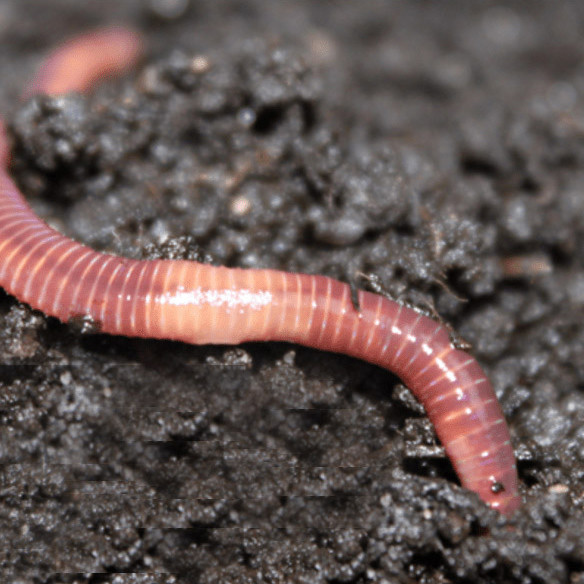Best red wigglers: For sustainable composting
Best red wigglers: For sustainable composting
Blog Article
Red Wigglers: The Secret to Eco-Friendly Composting
Red wigglers, clinically understood as Eisenia fetida, play an essential duty in lasting composting methods, using a natural remedy to squander management. red wigglers. These worms not only consume organic products yet additionally transform them right into important vermicompost, enhancing soil wellness and advertising environmental equilibrium.
What Are Red Wigglers?
Although numerous people recognize with earthworms, red wigglers (Eisenia fetida) are a certain species that play a crucial duty in composting. Indigenous to Europe, they have adapted well to a variety of environments, particularly in disintegrating raw material. Unlike typical yard worms, red wigglers flourish in abundant, damp settings, making them optimal for composting systems.
(red wiggler worms for sale)These worms are characterized by their reddish-brown coloration and elongated bodies, generally measuring between 3 to 4 inches in length. Red wigglers are epigeic worms, meaning they reside near the soil surface area and prey on decomposing natural product. Their high reproductive price enables populations to grow rapidly under optimal problems, with the ability to double in number every couple of months.
Red wigglers possess a distinct digestive system that allows them to break down organic waste efficiently. Their sustainable nature makes red wigglers a useful asset in eco-friendly composting techniques.
Benefits of Making Use Of Red Wigglers
Using red wigglers in composting systems provides countless advantages that enhance both the effectiveness of waste decomposition and the top quality of the resulting compost. These earthworms, medically referred to as Eisenia fetida, are renowned for their exceptional capability to consume organic waste, transforming it into nutrient-rich vermicompost at an outstanding price. Their rapid food digestion process speeds up the breakdown of cooking area scraps and yard waste, substantially reducing the moment required for composting.
Along with their efficiency, red wigglers contribute to boosted soil structure and fertility. The vermicast generated by red wigglers is rich in necessary nutrients, advantageous microbes, and humic acids, all of which improve dirt wellness and promote plant development. This nutrient-dense garden compost helps preserve wetness and boosts aeration in the soil, promoting a thriving community for plants.
In addition, using red wigglers for composting reduces landfill waste, adding to a more sustainable waste monitoring system. By drawing away organic materials from garbage dumps, composting with red wigglers decreases greenhouse gas emissions, making it an environmentally friendly option for ecologically mindful people and areas. Overall, red wigglers give an effective and sustainable solution for composting.
Setting Up Your Worm Container
Producing a worm container is an uncomplicated procedure that calls for mindful factor to consider of materials and conditions to ensure a successful environment for red wigglers. Begin by choosing a proper container, which can be a plastic container or wood box, with an ability of a minimum of 10 gallons for reliable composting. Make sure the container has appropriate ventilation by drilling little holes in the lid and sides to enable air flow.
Next, prepare the bed linens, which is crucial for maintaining dampness and giving an environment for the worms. Appropriate materials consist of shredded paper, cardboard, coconut coir, or peat moss. Go for a bed linen depth of roughly 4-6 inches, ensuring it perspires yet not extremely damp.
It's vital to preserve the appropriate temperature for your worm container, ideally in between 55 ° F and 77 ° F(13 ° C and 25 ° C) Setting the container in a shaded area to avoid overheating. Furthermore, keep the bin away from straight sunshine and extreme weather to secure the worms.
Feeding Your Red Wigglers
Feeding your red wigglers is a critical facet of effective worm composting, as it directly influences their health and wellness and the efficiency of your composting system. Red wigglers grow on a healthy diet plan consisting largely of natural waste materials. Ideal food choices include vegetables and fruit scraps, coffee premises, crushed eggshells, and shredded paper. Stay clear of feeding them meat, dairy products, and oily foods, as these can attract parasites and produce odors.
(red wiggler worms for sale)Begin with small quantities to allow the worms to consume the material totally before including much more. Monitor the food decomposition process and readjust the amount based on exactly how rapidly the worms are processing the waste.

Preserving Your Worm Compost System
A well-maintained worm compost system is vital for making the most of the effectiveness and long life of your composting initiatives. Regular tracking of moisture levels is important, as red wigglers flourish in a moist setting, ideally around 70% moisture. If the bed linen becomes too completely dry, gently mist it with water; alternatively, if it becomes excessively damp, include dry bed linen such as shredded paper or cardboard to absorb excess wetness.
Temperature level control is also important. Red wigglers favor temperatures between 55 ° F and 77 ° F(13 ° C to 25 ° C) If temperatures go beyond 85 ° F(29 ° C), the worms might become stressed out or pass away. Guarantee your garden compost system is kept in a shaded, ventilated area to avoid getting too hot.
Check the worm populace and their task; a prospering population indicates a well-balanced setting. By adhering to these upkeep methods, you can ensure an effective and lasting worm composting system that successfully recycles organic waste.

Final Thought
In final thought, red wigglers play an essential function in eco-friendly composting by efficiently transforming organic waste right into important vermicompost. Their capacity to prosper in rotting products not only help in pop over to this web-site reducing land fill waste and greenhouse gas emissions however also boosts dirt health and wellness. By advertising moisture retention and aeration, these worms add significantly to sustainable gardening methods. Embracing using red wigglers represents a useful strategy to improving ecological sustainability and promoting much healthier ecological communities.
Report this page